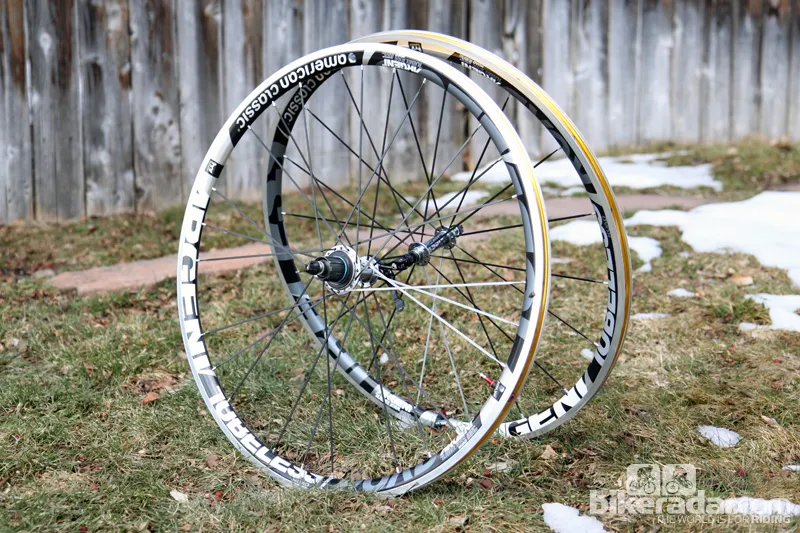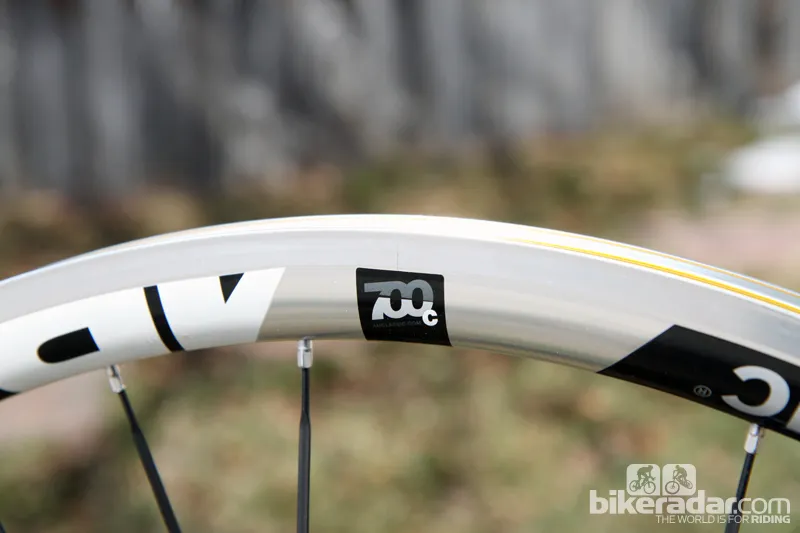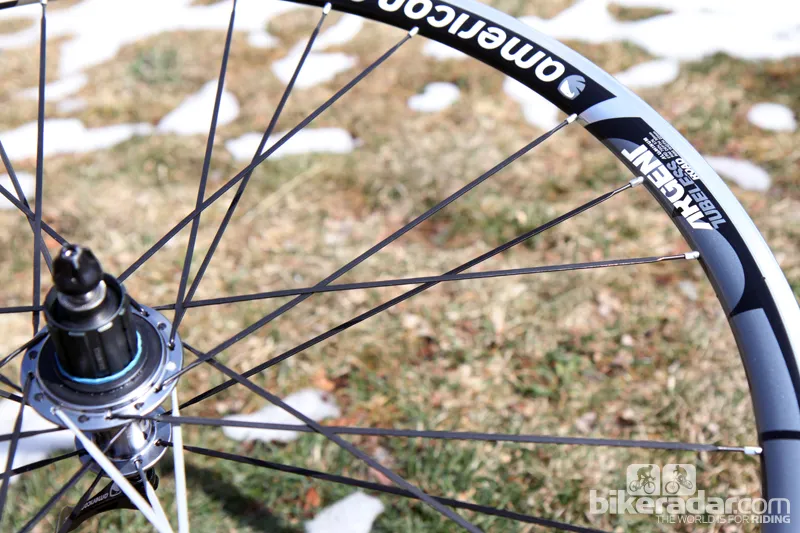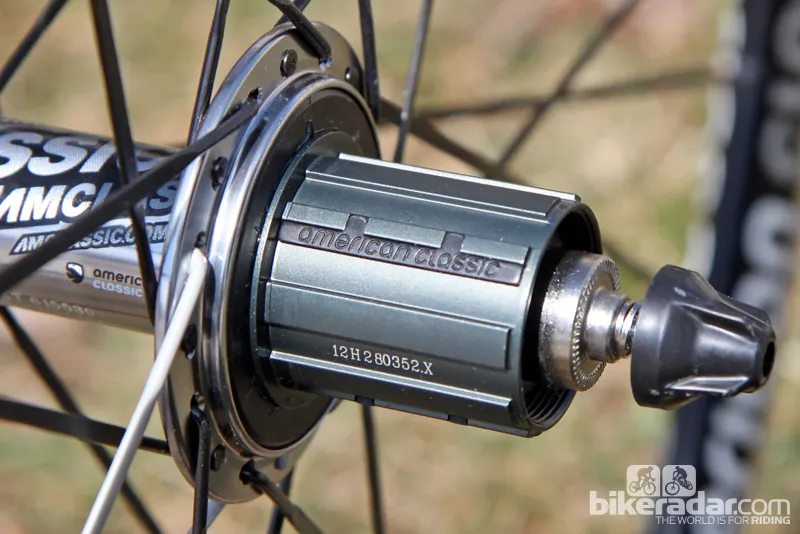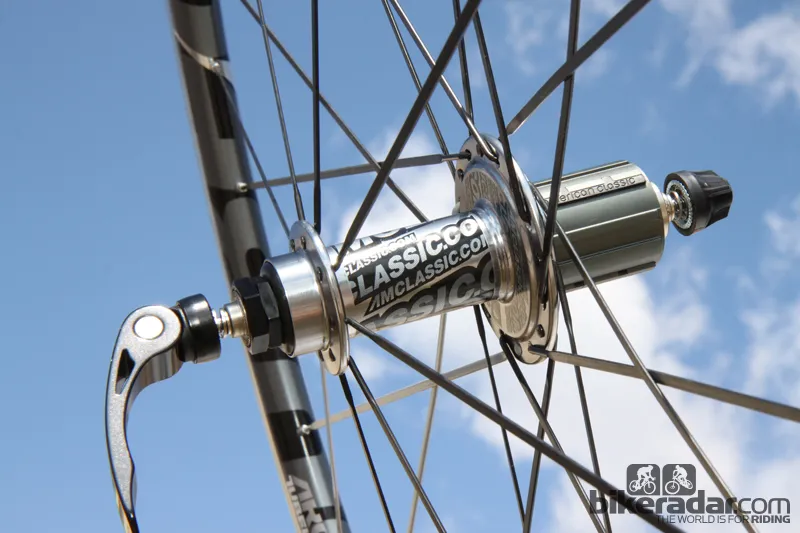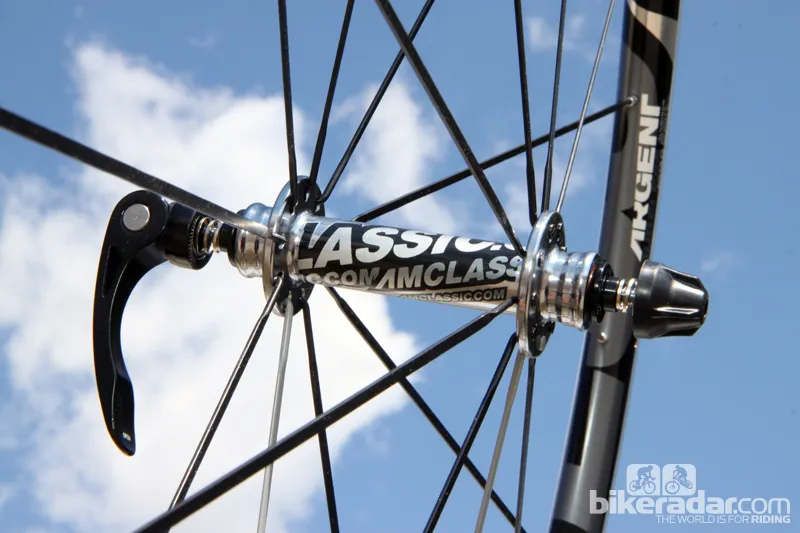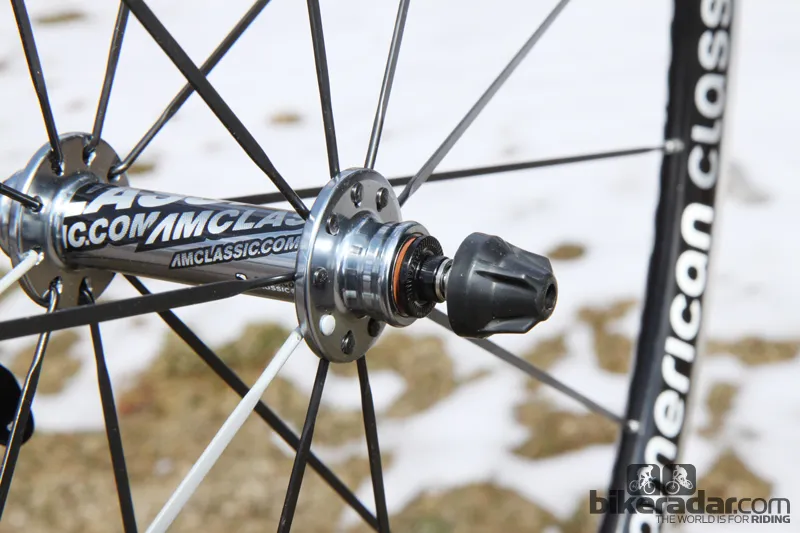American Classic's new Argent Road Tubeless is one of the latest entries into the new school of road wheelsets. They're light, they're wide, and, as the name suggests, they're also tubeless compatible. Add in a sturdy build, a good ride quality, and a fairly reasonable price and the result is an excellent choice for everyday riding or racing.
American Classic founder Bill Shook might object to this sort of analogy but the Argent Road Tubeless rims are essentially the road equivalent of Stan's NoTubes' venerable mountain bike hoops.
The internal width is unusually generous at 19.4mm (Mavic's latest Cosmic Carbone 40 C is still just 15mm across), the effective diameter is slightly larger than the usual ETRTO-regulated 622mm, and the bead hooks are lower and thinner than usual.
As a result, any tire you use will measure considerably wider than it otherwise would on a more conventional rim, while tubeless models will inflate more readily (and seat more securely).
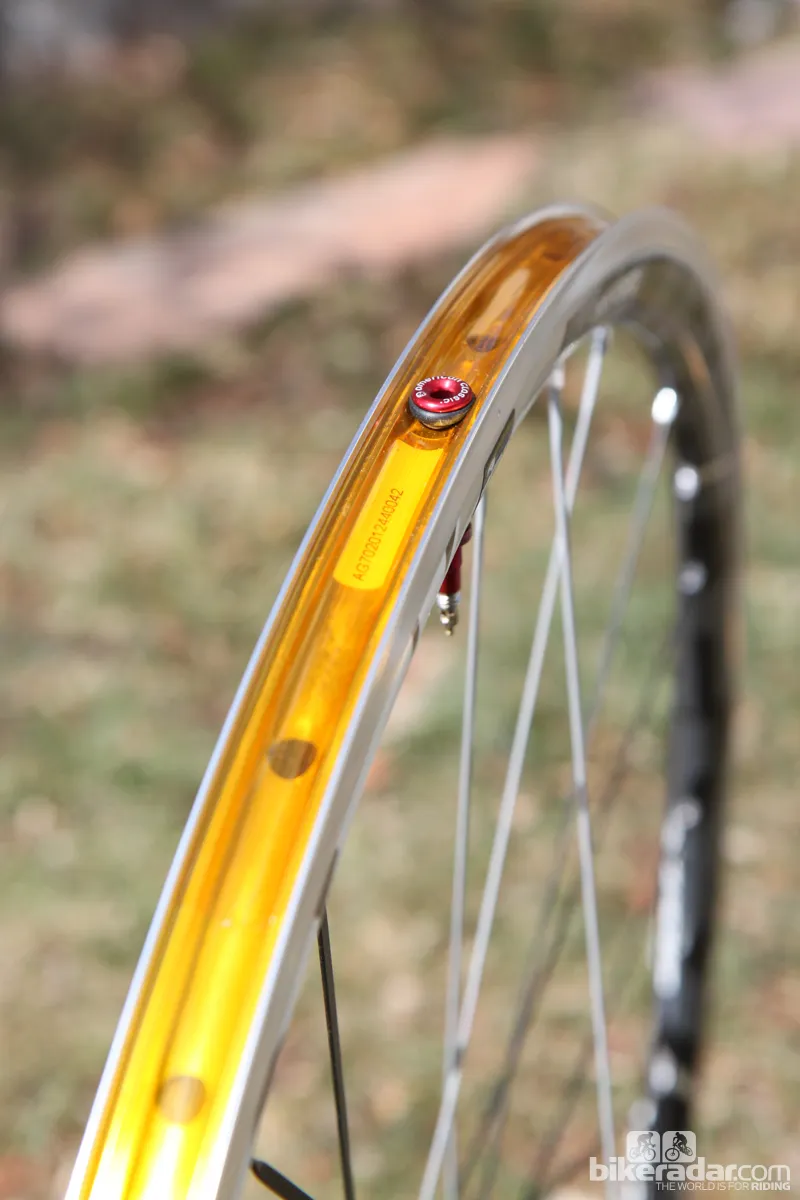
The Argent Road Tubeless rims require tape to be airtight
We tested the Argent wheels with a familiar pair of Bontrager R3 TLR tubeless-ready road tires, which are labeled as 25mm wide but measured more than 27mm across once installed – and we inflated them with a floor pump, too.
Armed with such volume and girth, it's no wonder that ride quality is impressively smooth, with a sublime glide over broken tarmac and still a reasonably composed feel when we hammered the Argents across Belgian pavé.
Cornering performance is confidence inspiring, with the broad contact patch offering up heaps of reassuring traction and the wide rim providing excellent casing support at more extreme lean angles.
More conventionally sized tires obviously decrease the volume and cushioning, but the Argents still ride well.
Durability has been very good, with just a slight touch-up required after the Argents made a trans-Atlantic journey stuffed in a Ritchey Breakaway case. Thanks to half a scoop of Stan's NoTubes sealant, we've rarely had to pump these up, either; nor did we suffer any flats during testing.
American Classic doesn't make any specific aerodynamic claims with the Argent Road Tubeless, and if there are any measurable gains over a box-section rim, they were tough to discern. That being said, crosswind stability is good, with a stiff Belgian spring crosswind generating just a modest tug on the bar.
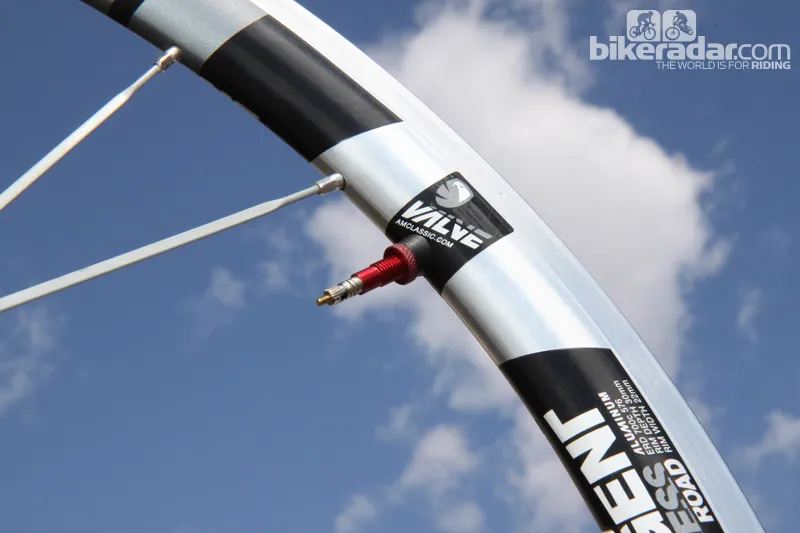
American Classic includes ultralight aluminum valves of its own design
The Argents are admirably light – especially so when you consider the generous width and medium 30mm depth. Claimed weight is 390g for the bare rim or 1,372g for a complete wheelset. At an actual weight of 1,400g for our test set (with tubeless tape pre-installed), the figures are very believable.
With the reasonable spoke count (18 front, 24 rear), two-to-one rear lacing pattern, and thick bladed stainless steel spokes they're fairly solid, with minimal flex under hard cornering and quick reflexes when you lay down the power.
Part of that fantastically low weight is due to the Argent's unusually thin aluminum extrusion. As a result, Shook prefers an older-style pinned rim joint over a welded one, saying the latter introduces heat-related shape changes that then have to be corrected afterwards.
The Argents' sidewalls thus aren't machined, either, but braking performance was still excellent in both wet and dry conditions. We did, however, notice some brake pulsing on the front rim due to a slightly imperfect seam. However, just like in the old days, it eventually went away as things wore down a bit. While we'd prefer this issue didn't exist at all, it's at least a temporary one (the rear one was fine).
American Classic seems to have exorcised the demons from its innovative rear hub design as we had no problems with the clever cam-actuated, six-pawl mechanism. It engages securely, coasts with just the slightest buzz, and is easy to service when required.

The rear hub features differential spoke flange diameters to improve bracing angles
We do wish American Classic would switch to angular contact bearings, though. The adjustable preload feature on the rear hub is very welcome but the conventional radial cartridge bearings aren't that tolerant of axial loading, so it's critical to get this just right.
Likewise, we support the company's position of placing the front hub bearings very far apart in the hub shell, for maximum support. In fact, we can't think of any front hub with better bearing spacing. That said, Shook does so at the expense of supplemental weatherproofing, as the bearings are pushed so far outboard that their seals are actually in direct contact with the elements.
Shook contends that he'd rather his bearings be left more exposed than less, so that any water that gets in can drain out. However, the forces that tend to push water in, such as pressurized spray and capillary action, don't work in the opposite direction. We're therefore skeptical of such a view – and once water gets inside a cartridge bearing the latter is usually as good as dead.
In fairness, we didn't succumb to any bearing failures on our test set. But, then again, we had little opportunity for wet weather testing.
Our final gripe is with the included quick-release skewers, whose external-cam design works alright but requires regular maintenance to stay that way. Otherwise, there's little to complain about and plenty to like.
